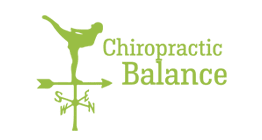Every day we see massive changes in people’s health and well-being simply by delivering Chiropractic adjustments. But we know that for optimal health working on a good range of stretches and strength work is also essential. And if there’s one exercise that most effectively boosts fitness and strength, gets results quickly, requires no equipment and can be done anywhere, it must be squatting exercises.
What’s also important is that squats isn’t just about the legs – they also have benefits through the rest of the body, including the lower back and core.
Dr. Mercola offers his top 5 benefits of squats below.
The Top 5 Benefits of Squats
1. Tone Your Backside, Abs and Entire Body
Few exercises work as many muscles as the squat, so it’s an excellent multi-purpose activity useful for toning and tightening your behind, abs, and, of course, your legs. Furthermore, squats build your muscles, and these muscles participate in the regulation of glucose and lipid metabolism and insulin sensitivity, helping to protect you against obesity, diabetes and cardiovascular disease.
2. Burn More Fat
One of the most time-efficient ways to burn more calories is actually to gain more muscle! For every 500g of additional muscle you gain, your body will burn an additional 50-70 calories per day. So, if you gain 5kg of muscle, you will automatically burn 500-700 more calories per day than you did before.
3. More Mobility, Better Balance
Squatting is a movement that is part of everyday life, regularly doing squats can make real world actions like picking up kids, bending over and lifting easier. Strong legs are crucial for staying mobile as you get older, and squats are phenomenal for increasing leg strength. They also work out your core and stabilising muscles, which will help you to maintain balance and improve the communication between your brain and your muscle groups, which helps prevent falls – which is incidentally the #1 way to prevent bone fractures versus consuming mega-dose calcium supplements etc.
4. Less Injuries, Jump Higher and Run Faster
Whether you’re a weekend warrior or a mum who chases after a toddler, you’ll be interested to know that studies have linked squatting strength with athletic ability. Specifically, squatting helped athletes run faster and jump higher, which is why this exercise is part of virtually every professional athlete’s training program. Most athletic injuries involve weak stabiliser muscles, ligaments and connective tissues, which squats help strengthen. They also help prevent injury by improving your flexibility (squats improve the range of motion in your ankles and hips) and balance.
5. Help with Waste Removal
Squats improve the pumping of body fluids, aiding in removal of waste and delivery of nutrition to all tissues, including organs and glands. They’re also useful for improved movement of faeces through your colon and more regular bowel movements.
What’s the Proper Way to Perform a Squat?
Squats have long been criticised for being destructive to your knees, but research shows that when done properly, squats actually improve knee stability and strengthen connective tissue. Here is the most effective way of squatting:
Two-minute Routine
- Wide legged squats
- Warm up
- Stand with your feet wider than your hips, feet at 45 deg angle pointing outward
- Keep your back in neutral position, ear over shoulder, knee caps aligned with direction of feet.
- Slowly bend your knees, hips and ankles, lower until you reach a 90-degree angle (or slightly higher or lower depending on your range of mobility and strength)
-
- Ensure you can still see your toes, and that your chest is still lifted
- To increase intensity
- Lift arms above head as you lower
- Hold extra weight in your hands
- To decrease intensity
- Have your heels raised on a rolled up mat/ block or similar
-
- Return to starting position, as you rise squeeze your buttock muscles
- Continue for around 50 seconds
- Have a 20 second break before repeating again, or do Narrow squats
- Narrow squats
- Warm up
- Stand with your feet shoulder width apart, feet pointing forward
- Keep your back in neutral position, ear over shoulder, knee caps aligned with direction of feet
- Slowly bend your knees, hips and ankles, lower until you reach a 90-degree angle (or slightly higher or lower depending on your range of mobility and strength)
- Ensure you can still see your toes, and that your chest is lifted
- To increase intensity
- As you squat, reach down with your arms and pick up something (like a weight, drink bottle, wine bottle). Lift it up, then put it back down on the next squat.
- To decrease intensity
- Have your heels raised on a rolled up mat/ block or similar
- Return to starting position, as you rise squeeze your buttock muscles
- Continue for around 50 seconds
As always, as you develop a workout routine that works for you, remember to listen to your body so it can guide you into a path that will provide you with the most efficient and effective benefits. This routine can be combined with our other strengthening 2 minute routines for a longer session.
Watch the video to see the squat technique and follow along for 2 minutes to get your workout now!
@chiropracticbalance


